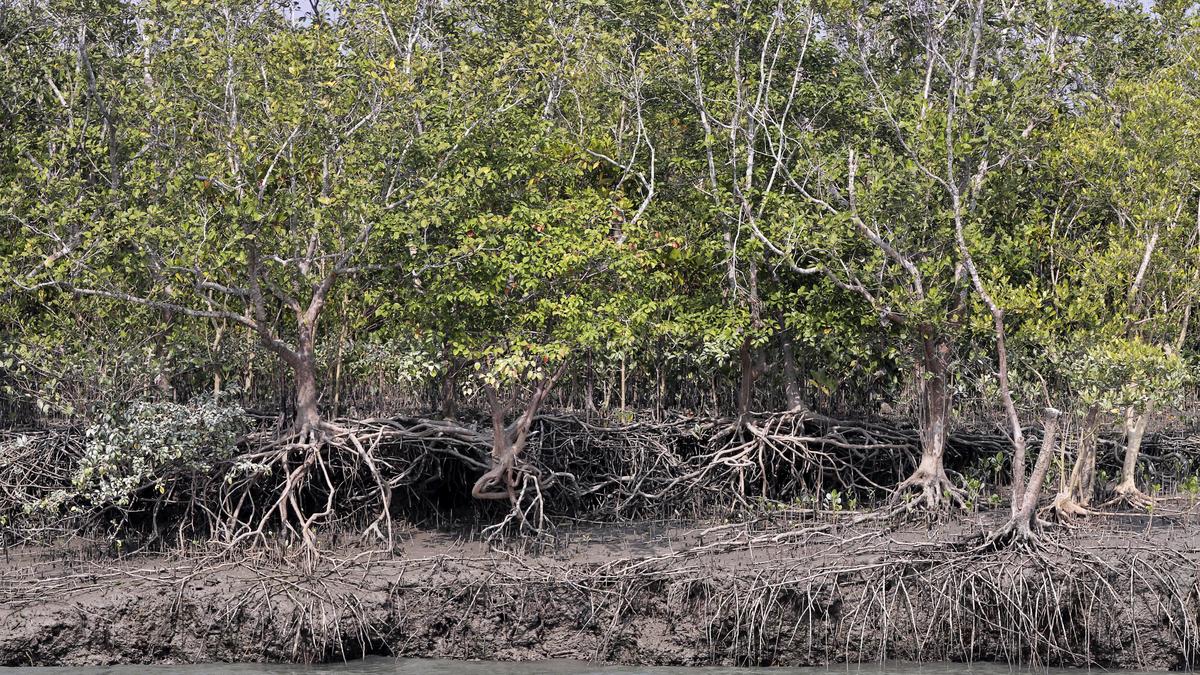Until the late 1980s, the value of mangroves was primarily understood by the communities that lived around them and relied on them for fishery resources and their livelihoods. But today, the word “mangroves” has become a buzzword, whether in the area of disaster risk reduction in coastal areas, climate adaptation through carbon sequestration, enhancement of coastal fishery resources, or the conservation of shoreline bird sanctuaries, to name a few.
The turning point
Although the United Nations Development Programme and UNESCO initiated a regional project on mangrove research in 1988, it was in 1989 that M.S. Swaminathan proposed a leading role for mangroves in managing the impact of climate change in coastal areas. At the Climate Change and Human Responses conference in Tokyo in 1989, he explained that rising sea levels due to climate change would cause a salinisation of land and water resources in coastal areas, leading to the loss of food production and employment. A rise in the frequency of cyclones due to rising sea surface temperatures causes the loss of life, livelihoods, and natural resources. As a response, M.S. Swaminathan suggested immediate action for the sustainable management of mangrove wetlands. This was based on the principles of ecology, economics, and equity as well as research on the utilisation of mangrove genetic resources to develop new saline-tolerant crops (by transferring genes for salinity tolerance from mangroves to rice and other crops). A series of important developments found M.S. Swaminathan playing a pivotal role in mangrove restoration, conservation and management.
Thanks to M.S. Swaminathan’s initiatives, the International Society for Mangrove Ecosystems (ISME) was established in 1990 in Okinawa, Japan — M.S. Swaminathan served as its Founding President till 1993.
He co-created the Charter for Mangroves and included it in the World Charter for Nature, prepared by the United Nations Conference on Environment and Development in 1992. To this day, this charter serves as a basis for mangrove conservation efforts at the global level.
The ISME conducted an assessment of the economic and environmental values of mangrove forests, including those in India, as well as the current state of their conservation. The ISME also organised a series of workshops on mangrove conservation and sustainable utilisation, published a manual of mangrove ecosystem restoration, and produced a World Mangrove Atlas. These activities, slowly but surely, transformed the common perception of what mangroves are: from an idea of them being marshy land waiting for conversion to other uses to their being central to a multiple-use coastal ecosystem. The ISME is promoting applied research, providing training to various stakeholders, and acting as a centre of knowledge products on mangroves.
Global infrastructure for conservation
Another vital contribution of M.S. Swaminathan was the development of the GLObal Mangrove database and Information System (GLOMIS), a searchable database on mangrove experts, research, and species, including the Mangrove Ecosystem Information Services, which focused on documenting genetic resources. In 1992, a team of scientists surveyed and evaluated 23 mangrove sites in South, Southeast Asia, and Oceania over nine countries, with scientific inputs from M.S. Swaminathan, to establish a global network of Mangrove Genetic Resource Centres. These centres are now conserved, monitored and managed as ‘Protected Areas’ by the respective governments.
At the national level, M.S. Swaminathan was instrumental in revolutionising India’s management of mangroves. India has a long history of mangrove management, dating back to 1783. However, this period was marked by extensive clearance and reclamation of the Sundarbans mangrove forests, primarily for agriculture and settlements. The practice of clear-felling as a system of mangrove management was widespread in India from the British colonial period until 1980, when the Indian Forest (Conservation) Act was enacted.
The working plans prepared by the British, and later by the State Forest Departments of independent India, showed that attempts to restore mangroves in clear-felled areas yielded minimal results. On the other hand, local communities were blamed for the poor results. Here, researchers from the M.S. Swaminathan Research Foundation, under the guidance of M.S. Swaminathan, played a key role.
Participatory research during 1993 and in the following years, first with the Tamil Nadu Forest Department and then with other States and local communities, revealed that changes in the biophysical conditions of the mangroves, due to the clear-felling system of management, were the primary reason for their degradation rather than resource utilisation by local communities. Based on this scientific evidence, a hydro-ecological method of mangrove restoration — commonly referred to as the fishbone canal method — was developed and pilot-tested in the mangroves of Tamil Nadu, Andhra Pradesh, Odisha, and West Bengal.
This method later evolved into a Joint Mangrove Management programme, which the then Ministry of Environment and Forests, evaluated in 2000 through a committee and recommended for replication in all suitable areas. This resulted in more investment by the Central and State governments for mangrove restoration and conservation. The immense role played by mangroves during the 1999 Odisha super cyclone and the 2004 Indian Ocean tsunami, in reducing the loss of life and damage to property and natural resources, paved the way for valuing large-scale restoration of mangroves, in India and globally.
Rise in mangrove cover
World Mangrove Day (July 26) is also an occasion to look at whether there has been change. The India State of Forest Report (ISFR) 2023 says that the total mangrove cover in India is 4,991.68 km2, which accounts for 0.15% of the country’s total geographical area. If one compares the ISFR 2019 to the ISFR 2023, there has been a significant increase, of 16.68 km2, in the country’s mangrove coverage.
Selvam Vaithilingam is a former Executive Director of the M.S. Swaminathan Research Foundation, and has four decades of experience in mangrove research and management
Published – July 26, 2025 12:08 am IST
